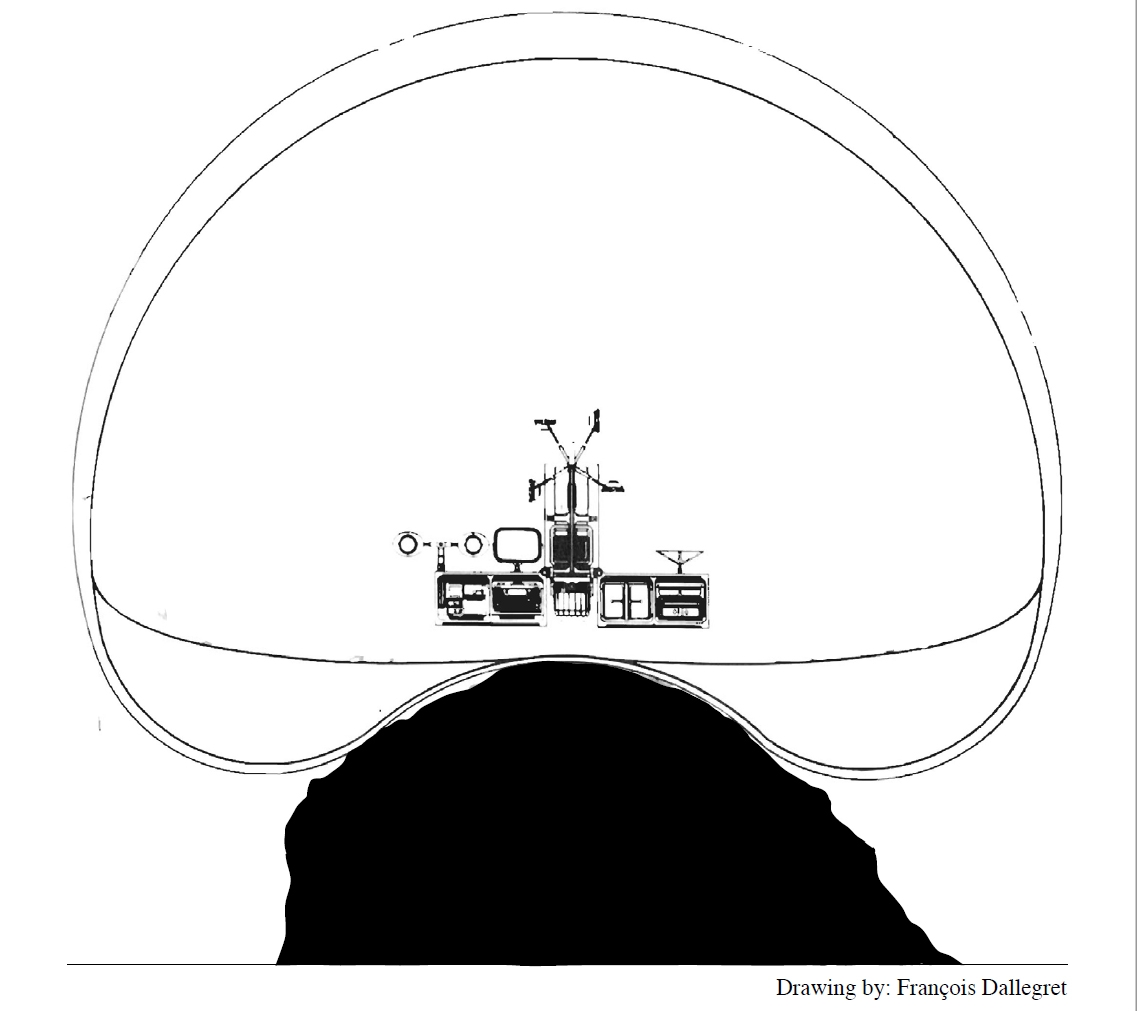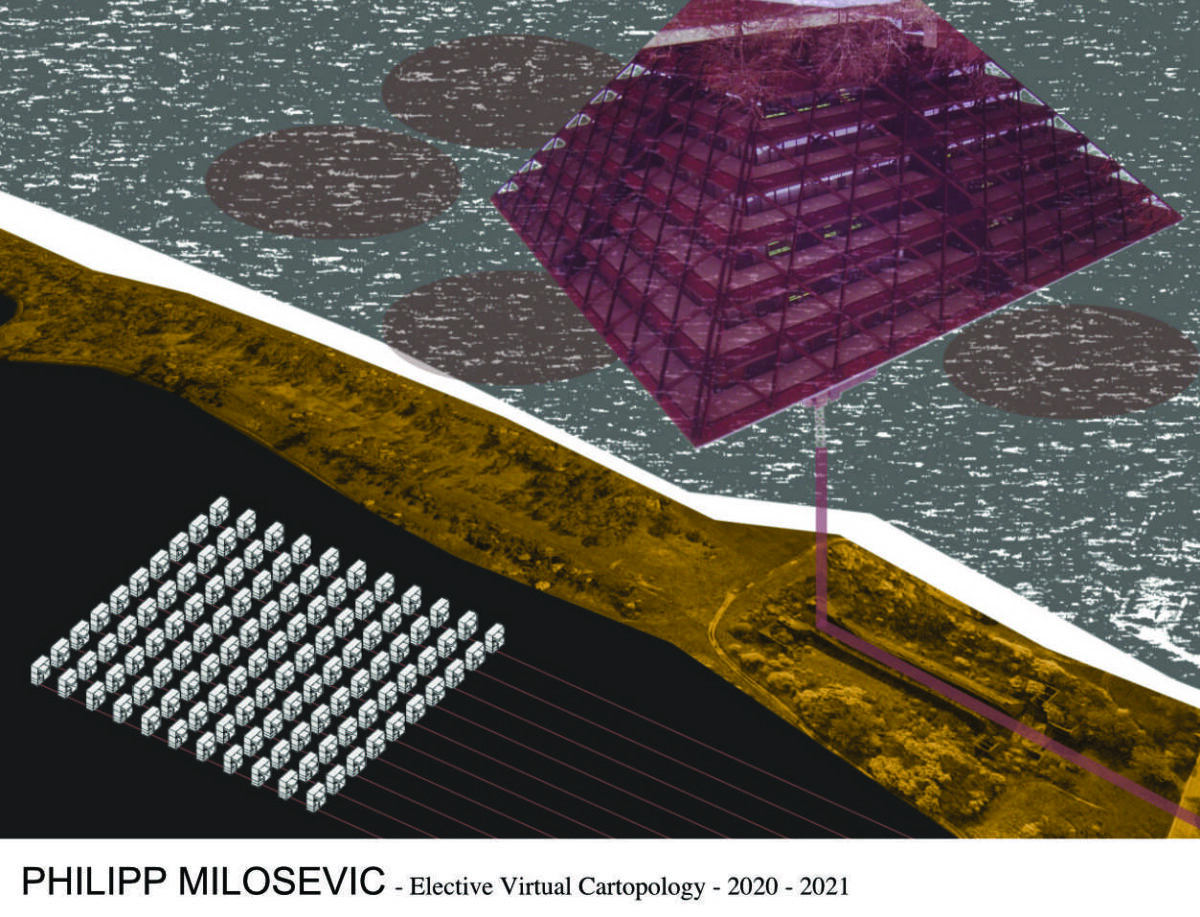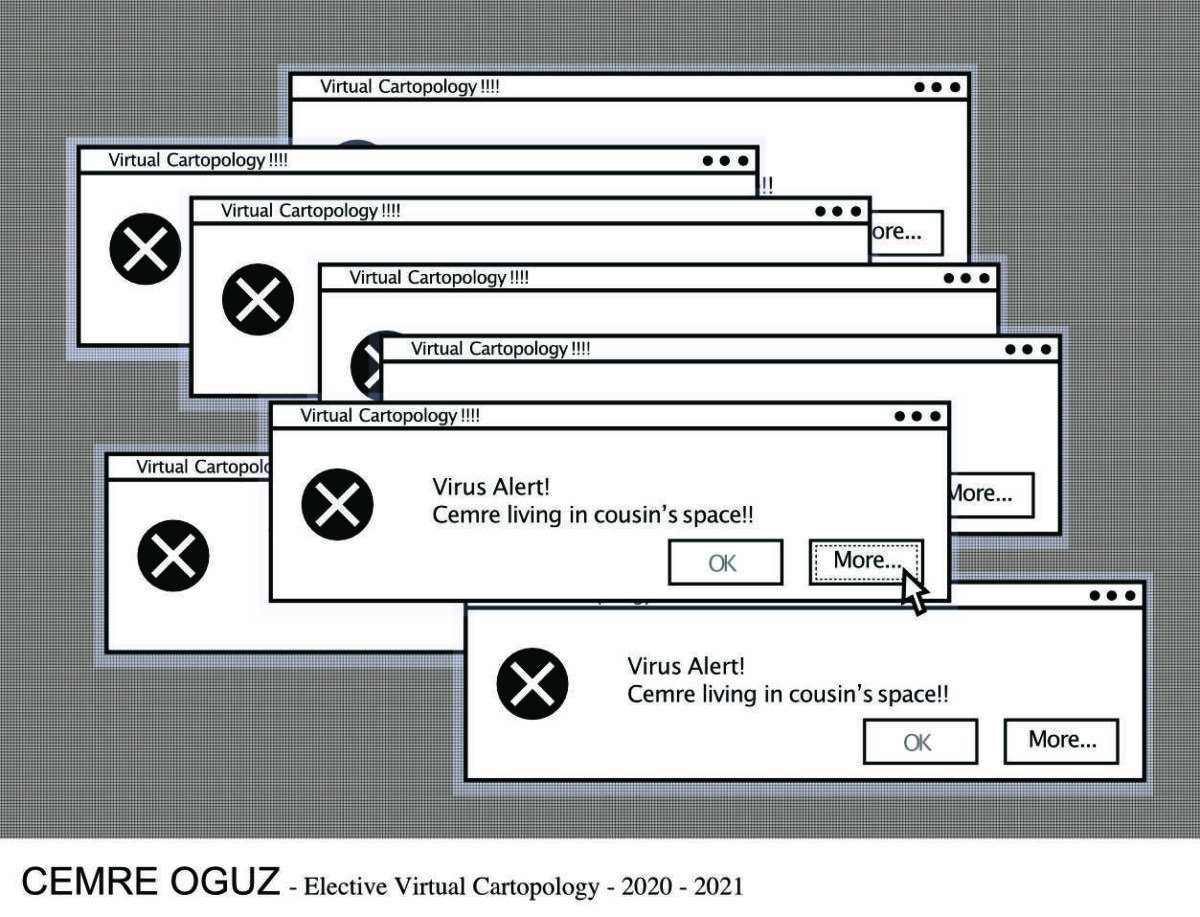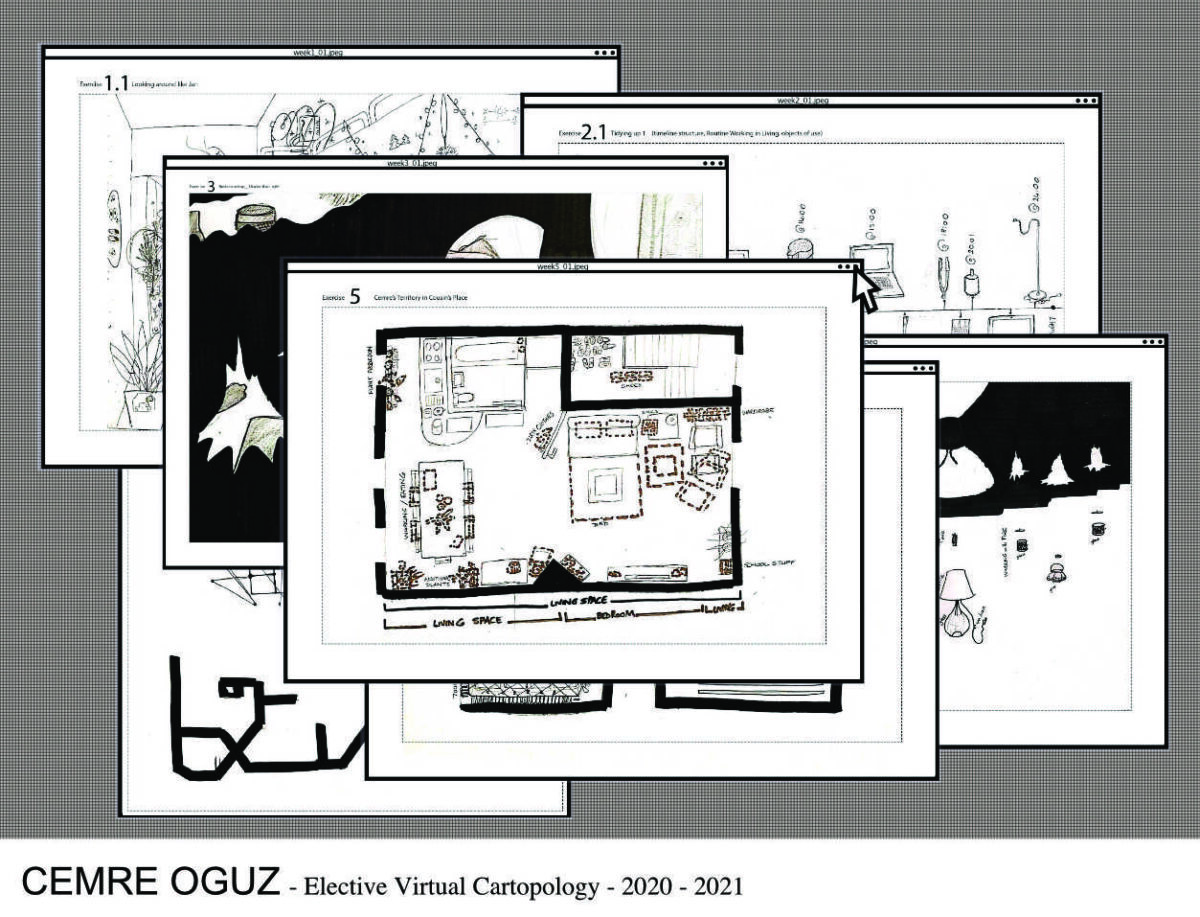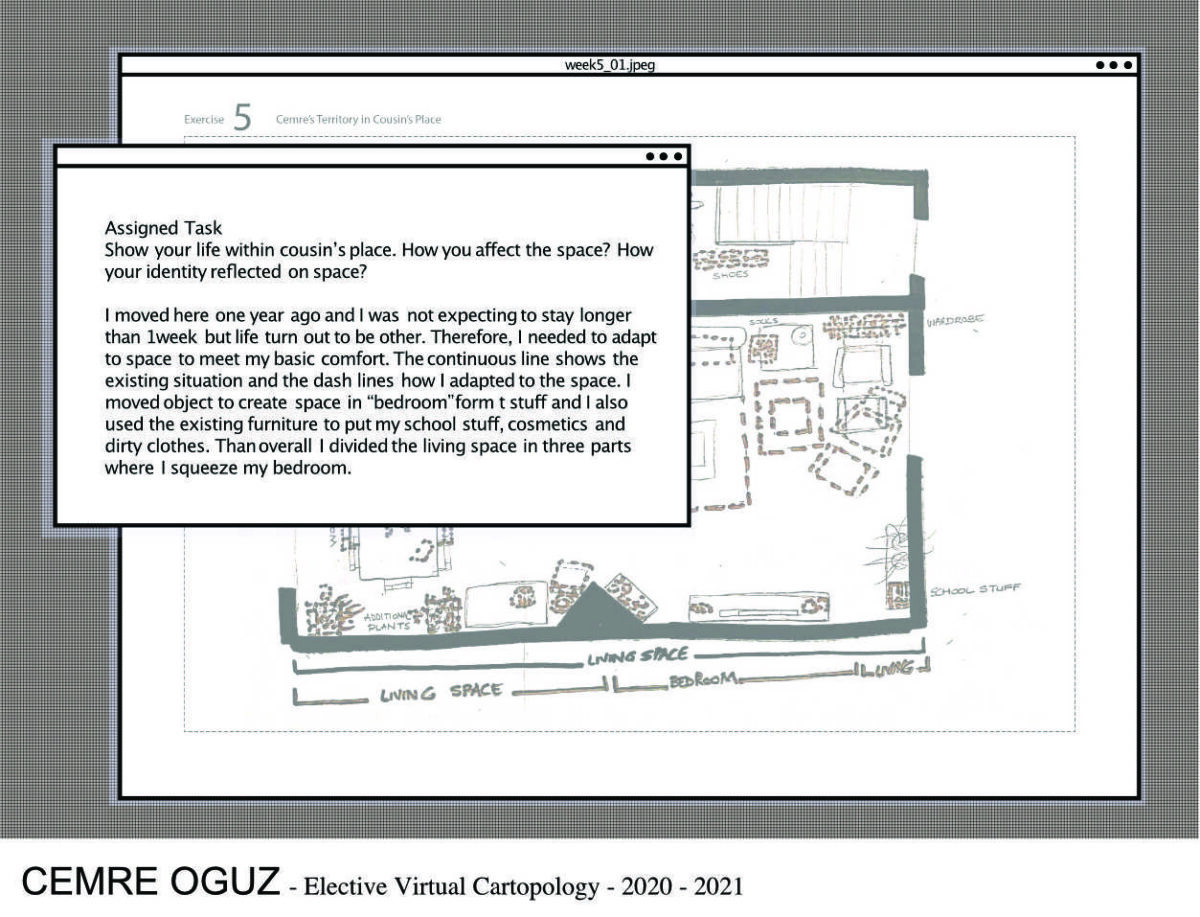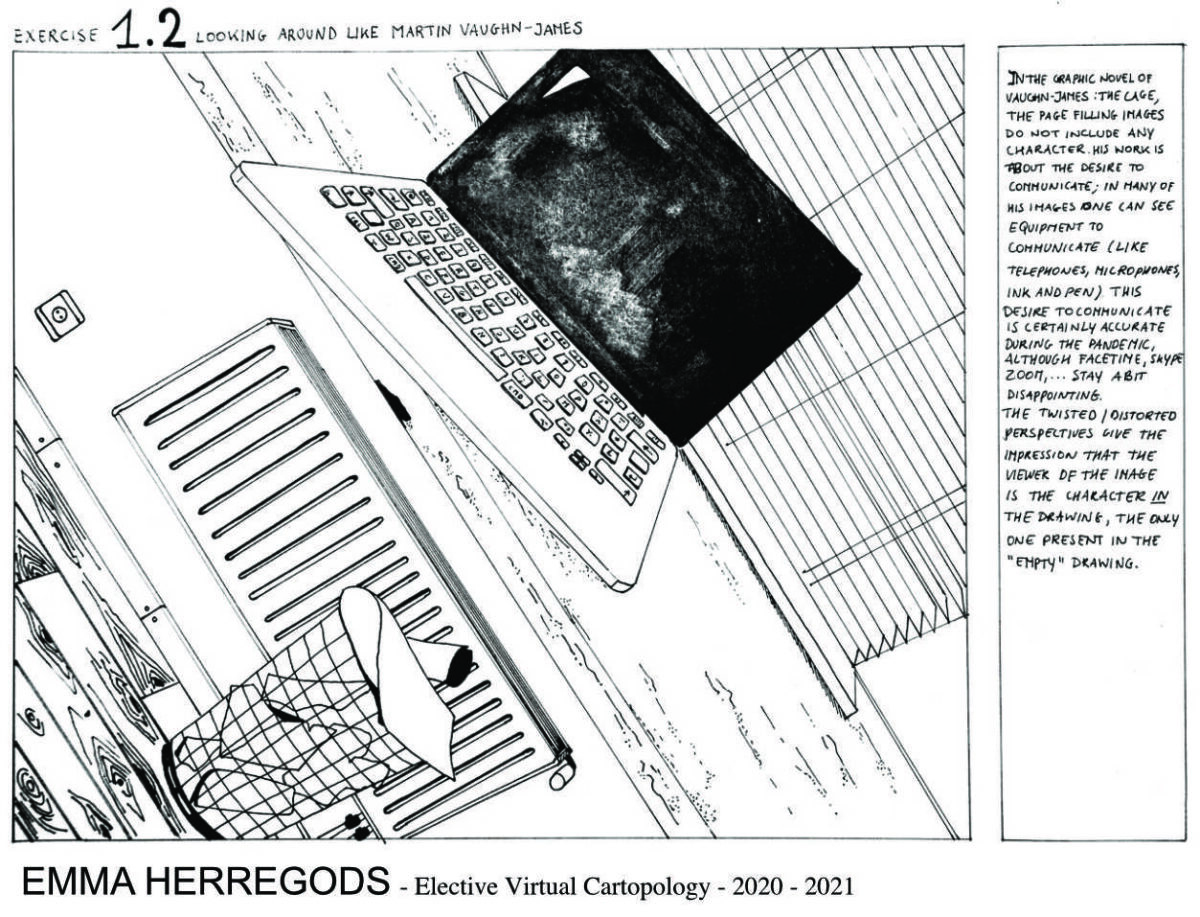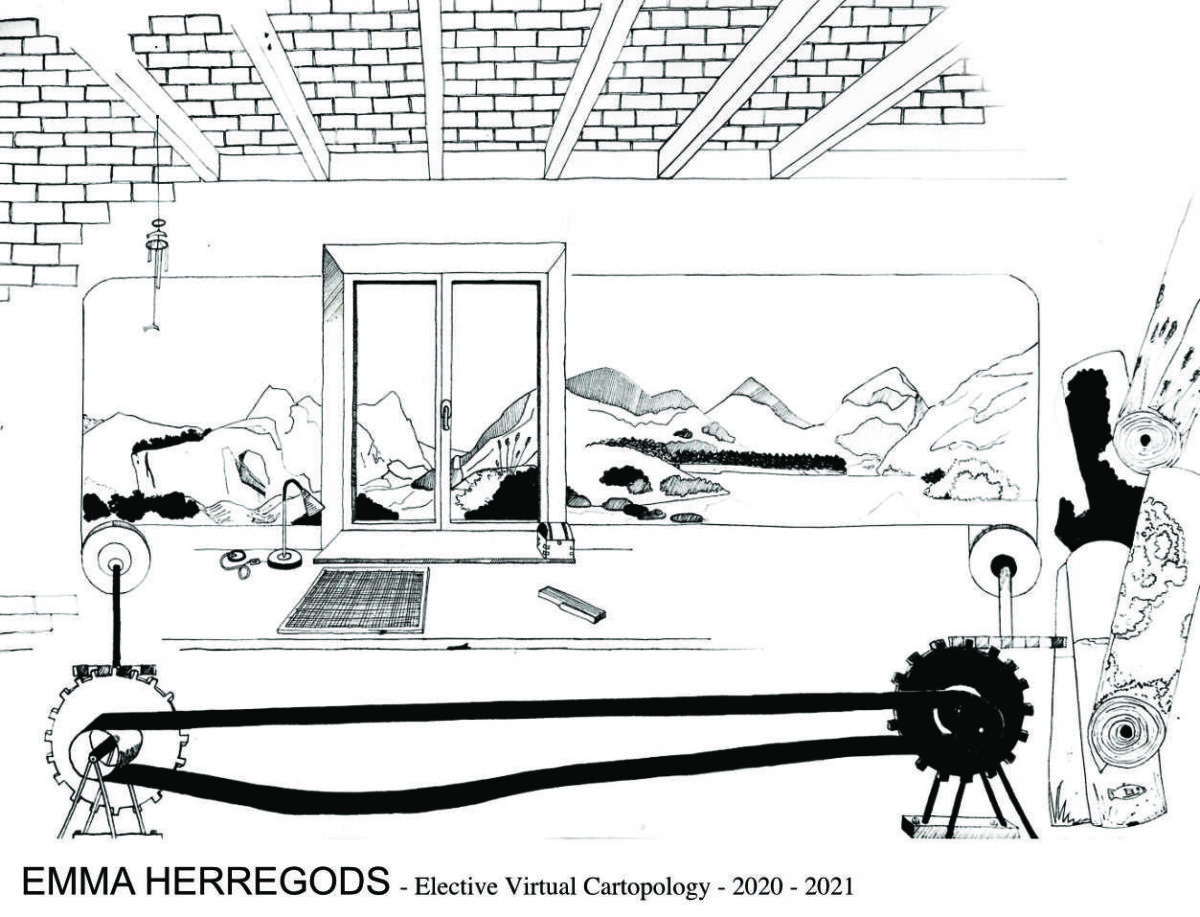Initiated by:
– Institute of Cartopology, Department Teaching – Marlies Vermeulen marlies.vermeulen@dearhunter.eu
– FH Erfurt, Faculty of Architecture – Carolin Stapenhorst carolin.stapenhorst@fh-erfurt.de
– KU Leuven, Faculty of Architecture – Marlies Vermeulen marlies.vermeulen@kuleuven.be
Introduction – the context of the assignment:
Because of Covid-19 and its necessary lockdowns the world never ‘took place’ more on- line than now. We work online, party online, network online and also teach online. The last few months we have seen more kitchen tables, beds and seats from colleagues and fellow students than professional, corporate and ‘neutral’ meeting rooms. We show more of our homely atmosphere than ever before, and, at the same time the public space is becoming more distant, with literally one and a half meters between every subject, everywhere. What does this mean? Because what actually happens is that I look straight into someone else’s room through a virtual window without being there myself and vice versa. And in meetings with several people I see all spaces, neatly stacked by Zoom, Skype, Teams,…. like one big apartment block. How do we as spatial thinkers deal with this and what do we have to ‘design’ here?
This assigment is a on-line collaboration between the FHE University in Germany and the KU Leuven University in Belgium and documents each others virtual workspaces. You will be given a cartopological training kit to exercise yourself and become sensitive to the daily reality in these virtual spaces on the one hand and on the other you will be taught documentation skills to notate (mostly through drawing) and imagine the more tangible and embodied qualities of space.
As such, you will be asked to deal with this topic by participating in and sharing your virtual working space through doing, making, mapping and drawing those sensitivities that aren’t so clearly materialized in the virtual world.
Cartopology – the basics:
Cartopologists join the narrative of the lived reality with the physical place. Cartopological maps find themselves at the intersection of two families of disciplines: those born from a spatial perspective (architecture, urban planning and cartography) in which the use of plans based on standardized notational systems are pushing narrative and nearness into the background and those born from a fascination for human behaviour and interaction (ethnography and anthropology) where the onedirection nature of a written outcome minimizes the active experience of space.
Cartopologists look for the extent to which spaces are inhabited and make up the day to day. It is a search for knowledge that is not immediately written down or told at first, but is rather hidden in habits and embodied in actions dealing with places that it is taken for granted. Cartopological maps support them as it takes the role of a research instrument to calibrate the cartopologist in their role of participant-observer. It is a way in which you collect thoughts, experiences, ideas and reflections not only by observing the research location and the participants, but also by actively engaging with that location and the activities that take place on that location. This demands from the cartopologist to take the brave position of not knowing, having trust in the estrangement and susceptibility as a curious researcher to become integrated into the participants’ environment while simultaneously mapping what is going on.
So the cartopologist embarks on fieldwork to search for knowledge hidden on location, while the map shelters this messy process providing a platform to document and localise these experiences at the same time.
Most cartopological maps start with analog drawings and there are several reasons why (the) drawing is important for that. The two most valuable in the context of this project are the following:
First, by means of a visual language, cartopology provides a common ground by creating drawings that can be ‘read’ and appropriated by both scientists and non-scientists, related to different disciplines. It welcomes, collects and classifies material based on its geographical importance without taking in account established borders between disciplines and fields.
A second reason why drawing as a visual language is precious to cartopology is because it enforces strictness while observing and looking. The more you observe, the more you know what to draw, the more you dive into the world you are observing, the more you can connect with that world. Collecting observations through drawing creates that necessary intimacy. Being at the drawing table and mapping the location’s narrative, the cartopologist turns to abstraction, dealing with proportions, scale and orientation. The relation with the location changes from being part of it towards looking at it from a distance. The dialogue between the observation on site and the notation at the drawing table, or between the local intimacy and the abstraction of a drawing is where the understanding and visualizing of the (often hidden) narrative of a location happens.
Drawing is not simply documenting what we see, it is a craft through which we learn to see.
Cartopology the basics
https://en.wikipedia.org/wiki/Cartopology
https://cartopology.institute
- Read more on the workshop in the booklet of Virtual Cartopology.

